Results 5,971 to 5,980 of 12094
Thread: Anandtech News
-
05-12-16, 07:57 AM #5971
Anandtech: Market Views: HDD Shipments Down 20% in Q1 2016, Hit Multi-Year Low
Leading industry watchers like IDC and Gartner early this year predicted that the first quarter of 2016 would not be good for the PC industry and various companies agreed with that. The reasons for the declines are well known: global economic issues, the slowdown in China, the strong U.S. dollar as well as competition from smartphones and other devices. As sales of PCs were not strong as predicted, this negatively affected the hard drive market.
More...
-
05-12-16, 02:18 PM #5972
Anandtech: Micron Confirms Mass Production of GDDR5X Memory
Micron Technology this week confirmed that it had begun mass production of GDDR5X memory. As revealed last week, the first graphics card to use the new type of graphics DRAM will be NVIDIA’s upcoming GeForce GTX 1080 graphics adapter powered by the company’s new high-performance GPU based on its Pascal architecture.
Micron’s first production GDDR5X chips (or, how NVIDIA calls them, G5X) will operate at 10 Gbps and will enable memory bandwidth of up to 320 GB/s for the GeForce GTX 1080, which is only a little less than the memory bandwidth of NVIDIA’s much wider memory bus equipped (and current-gen flagship) GeForce GTX Titan X/980 Ti. NVIDIA’s GeForce GTX 1080 video cards are expected to hit the market on May 27, 2016, and presumably Micron has been helping NVIDIA stockpile memory chips for a launch for some time now.
Earlier this year Micron began to sample GDDR5X chips rated to operate at 10 Gb/s, 11 Gb/s and 12 Gb/s in quad data rate (QDR) mode with 16n prefetch. However, it looks like NVIDIA decided to be conservative and only run the chips at the minimum frequency.NVIDIA GPU Specification Comparison GTX 1080 GTX 1070 GTX 980 Ti GTX 980 GTX 780 TFLOPs (FMA) 9 TFLOPs 6.5 TFLOPs 5.6 TFLOPs 5 TFLOPs 4.1 TFLOPs Memory Clock 10Gbps GDDR5X GDDR5 7Gbps
GDDR56Gbps
GDDR5Memory Bus Width 256-bit ? 384-bit 256-bit 256-bit VRAM 8 GB 8 GB 6 GB 4 GB 3 GB VRAM Bandwidth 320 GB/s ? 336 GB/s 224 GB/s 192 GB/s Est. VRAM Power Consumption ~20 W ? ~31.5 W ~20 W ? TDP 180 W ? 250 W 165 W 250 W GPU "GP104" "GP104" GM200 GM204 GK110 Manufacturing Process TSMC 16nm TSMC 16nm TSMC 28nm Launch Date 05/27/2016 06/10/2016 05/31/2015 09/18/2014 05/23/2013
As reported, Micron’s first GDDR5X memory ICs (integrated circuits) feature 8 Gb (1 GB) capacity, sport 32-bit interface, use 1.35 V supply and I/O voltage as well as 1.8 V pump voltage (Vpp). The chips come in 190-ball BGA packages with 14×10 mm dimensions, so, they will take a little less space on graphics cards than GDDR5 ICs.
The announcement by Micron indicates that the company will be the only supplier of GDDR5X memory for NVIDIA’s GeForce GTX 1080 graphics adapters, at least initially. Another important thing is that GDDR5X is real, it is mass produced now and it can indeed replace GDDR5 as a cost-efficient solution for gaming graphics cards. How affordable is GDDR5X? It should not be too expensive - particularly as it's designed as an alternative to more complex technologies such as HBM - but this early in the game it's definitely a premium product over tried and true (and widely available) GDDR5.
More...
-
05-12-16, 09:41 PM #5973
Anandtech: NVIDIA Announces Q1 FY 2017 Results: Strong Growth In All Segments
Much of the PC industry has been reporting less than strong results, with declines in PC unit sales leading to lower earnings for many of the big players such as Intel, AMD, and even Apple. NVIDIA has bucked this trend though with a strong quarter to start their fiscal year 2017. Revenue for the quarter was $1.305 billion, up 13% from Q1 FY 2016, with growth in NVIDIA’s GPU business, datacenter, automotive, and professional visualization all showing strong sales. Gross margin for the quarter was 57.5%, up 0.8% from a year ago. Operating income was up 39% to $245 million, and net income came in up 46% to $196 million. This resulted in earnings per share of $0.33.
NVIDIA also reports Non-GAAP results, which exclude stock based compensation, warranty charges, restructuring fees, and other fees. The Non-GAAP results had revenue of $1.305 billion, which is up 13%. Gross margin was 58.6%, which is up 1.7%. Operating income was up 39% to $322 million, and net income was up 41% to $263 million. Non-GAAP earnings per share were $0.46.NVIDIA Q1 2017 Financial Results (GAAP) Q1'2017 Q4'2016 Q1'2016 Q/Q Y/Y Revenue (in millions USD) $1305 $1401 $1151 -7% +13% Gross Margin 57.5% 56.5% 56.7% +1.0% +0.8% Operating Income (in millions USD) $245 $252 $176 -3% +39% Net Income $196 $207 $134 -5% +46% EPS $0.33 $0.35 $0.24 -6% +38%
GPUs accounted for most of the revenue, with GPU revenue coming in at $1.08 billion for the quarter. This is a gain of 15% year-over-year, driven by strong growth in the GeForce lineup. NVIDIA has recently announced their latest Pascal architecture with the GTX 1080 and GTX 1070, with cards coming soon, so I would expect strong sales to continue. Tegra processor revenue for the quarter was $160 million, up 10% compared to Q1 2016, thanks to continued growth in Tegra automotive.NVIDIA Q1 2017 Financial Results (Non-GAAP) Q1'2017 Q4'2016 Q1'2016 Q/Q Y/Y Revenue (in millions USD) $1305 $1401 $1151 -7% +13% Gross Margin 58.6% 57.2% 56.9% +1.4% +1.7% Operating Income (in millions USD) $322 $356 $231 -10% +39% Net Income $263 $297 $187 -11% +41% EPS $0.46 $0.52 $0.33 -12% +39%
Gaming platform revenue was up 17% to $687 million, consistent with the strong growth in PC gaming compared to the rest of the PC market. Quadro revenue, filed under Professional Visualization, was up 4% to $189 million.
Datacenter revenue which includes Tesla and GRID results were a record $143 million for the quarter, up 63% from a year ago, driven by demand for GPU acceleration for deep learning.
Automotive revenue was $113 million of the $160 million for Tegra, up 47% year-over-year. It appears that NVIDIA made the right call with Tegra by mostly abandoning the mobile market where competition is pretty fierce, and they’ve really gained a good diversified foothold in the automotive sector where higher TDPs can let them drive larger GPUs.
Finally, the licensing deal with Intel, which is going to end soon, accounted for $66 million in revenue.
NVIDIA has had a pretty successful run since the introduction of their Maxwell products, and these results are all prior to Pascal even coming on the market in a consumer card. NVIDIA’s outlook for Q2 is revenue of $1.35 billion plus or minus 2%, and GAAP gross margin of 57.7%, plus or minus 0.5%.NVIDIA Quarterly Revenue Comparison (GAAP) In millions Q1'2017 Q4'2016 Q1'2016 Q/Q Y/Y GPU $1079 $1178 $940 -8% +15% Tegra Processor $160 $157 $145 +2% +10% Other $66 $66 $66 flat flat
Source: NVIDIA Investor Relations
More...
-
05-13-16, 02:50 PM #5974
Anandtech: Philips Begins to Sell 43” 4K IPS BDM4350UC Display for $799
For many workloads that require a lot of on-screen space, big displays are hugely beneficial — the bigger the better. TPV Technology, the company that produces monitors under Philips brand, recently decided to go very big and introduced a new 43" display with a 3840 x 2160 resolution. While the monitor is intended mostly for prosumer workloads, its price is not too high.
Extremely large displays are generally overkill for everyday workloads, but there are industries where the workloads require more on-screen space than a single monitor can provide. For example, many engineers and financial brokers use multi-display setups to maximize their productivity and view far more info than they could on a single display. While it is impractical to substitute four, six or eight displays in control rooms or in traders’ offices with fewer physical screens, engineers and designers could use one big monitor instead of two smaller ones. Philips is targeting this group of users with its Brilliance UltraClear 43” display, which is more like a television than a monitor.
The Philips UltraClear 43” (BDM4350UC) display uses an IPS panel with a 3840 × 2160 resolution and W-LED backlighting. It has a 300 nit brightness, a 1200:1 contrast ratio, and a 60 Hz refresh rate. According to Philips, the brightness uniformity is 96~105%, which is quite good for a display of this size. Philips also includes a uniformity feature called Smart Uniformity to correct inconsistencies in the backlighting, but it's not clear how well it works in the real world or what limitations it imposes on the display modes that can be used.
The UltraClear 43” comes with two HDMI 2.0 ports with MHL support, two DisplayPort 1.2 ports, and a D-Sub connector. The monitor can be connected to up to four video sources and display images from them in picture-by-picture mode. The display is also equipped with a quad-port USB 3.0 hub as well as two 7W speakers.Philips BDM4350UC Panel 43" IPS Resolution 3840 × 2160 Refresh Rate 60 Hz Response Time 5 ms gray-to-gray Brightness 300 cd/m² Contrast 1200:1 Viewing Angles 178°/178° horizontal/vertical Color Saturation 1.07 billion colours, 100% sRGB Pixel Pitch 0.2451 mm Pixel Density 102 ppi Brightness Uniformity 96 - 105% Picture-in-Picture Up to four 1080p PiP images supported Inputs 1 × D-Sub
2 × HDMI 2.0
2 × MHL
1 × DP 1.2USB Hub 4-port USB 3.0 hub,
one port supports fast chargingAudio 7W × 2 Launch Price $799.99
Just like TVs, the Philips UltraClear 43” comes with a stand that does not allow adjustment of tilt or height, which is a drawback. Fortunately, the monitor has a VESA mount, so, it should be possible to get an appropriate arm or aftermarket stand that does support this, although it will need to be able to support the display's mass and size.
It remains to be seen whether there's a sizable market for the UltraClear 43”, but for tasks like editing spreadsheets and CAD work it could be quite useful. Right now the Philips UltraClear 43” is available on Amazon for $799.99.
Buy Philips UltraClear 43-inch on Amazon.com
Gallery: Philips Begins to Sell 43” 4K IPS Display for $799





More...
-
05-13-16, 05:31 PM #5975
Anandtech: QNAP Expands Thunderbolt NAS / DAS Lineup with TVS-x82T Series
QNAP recently held a product launch event in San Jose. The main announcement was the follow-up to their TVS-871T released late last year. The first generation Thunderbolt NAS came with eight 3.5" drive slots, 16GB of RAM, two Thunderbolt 2 ports and two 10GBASE-T ports. Despite being priced at $2800 (Haswell Core i5 configuration) and $3200 (Haswell Core i7 configuration), QNAP noted that it was popular enough to expand the lineup with more models. The popularity stems from the fact that creative professionals dealing with multimedia content often deal with Thunderbolt DAS units for fast access to data. However, those DAS units are typically not amenable to shared workflows. This is where a NAS / DAS combination like the TVS-871T has been able to make an impact. Thunderbolt networking support means that multiple PCs can access the NAS / DAS at high speed, while the network links can be used by other non-performance sensitive clients to access the data.
The new TVS-x82T series comes in three different varieties, the TVS-682T, TVS-882T and TVS-1282T. They have 4, 6 and 8 3.5" drive bays respectively. The 4- and 6-bay units have two additional 2.5" drive slots, while the 8-bay unit has four additional 2.5" drive slots. The 6- and 8-bay units have LCD screens in the front panel. As the slide below shows, the models come with three HDMI ports (2x HDMI 1.4 + 1x HDMI 2.0), and have two M.2 SSD slots on the motherboard. The TVS-1282T also has a spare PCIe 3.0 x8 slot that can be used to add a 10 GbE / 40 GbE card or NVMe SSD or a USB 3.1 Gen 2 card or even a discrete GPU (that can be used as a passthrough device for a VM running on the TVS-1282T).
QNAP was also heavily promoting their Qtier automatic data tiering technology which helps in improving performance while also enabling archive functionality within the same NAS by using another storage pool. Thunderbolt expansion units (5-bay and 8-bay) are also available.
More information on the TVS-x82T models can be found on QNAP's product page here.
It is interesting to note that the Thunderbolt ports are v2 and enabled by an add-on card. One of our chief complaints is the usage of Thunderbolt 2 instead of Thunderbolt 3 (which can also act as a USB 3.1 Gen 2 host / client as needed). QNAP mentioned that Thunderbolt 3 add-on cards are definitely in the pipeline, but, most current Thunderbolt users are in the Apple ecosystem. Thunderbolt 2 is the best technology currently available in those setups, and QNAP is pitching the TVS-x82T to that market currently.
QNAP also had live demonstrations of the TDS-16489U (for hyperconvergence with a 2P Xeon platform that enables the application server and storage server to be one unit) and the ES1640dc dual-controller ZFS NAS.
We have already looked at both these products in detail as part of our 2016 CES coverage.
The new information presented at the San Jose event included availability details (mid-June for all products) and pricing for the enterprise NAS units (starting at $7700 for the TDS-16489U and $9700 for the ES1640dc).
One of the striking slides that we saw as part of the ES1640dc presentation was the competitor landscape / target market for the unit.
It is great to see QNAP move up to the next level and compete with the big guys such as QSAN, EMC and NetApp in the enterprise space. As the above slide shows, the hardware configuration is very good compared to the competition and I am pretty sure the pricing is more than competitive. However, in the enterprise space, the main challenge is support requirements. Enterprise customers require service contracts that keep any hardware-related downtime to the absolute possible minimum, and the software needs to be stable and production-ready. Quality Assurance steps also need to be more stringent compared to the typical requirements in the SMB market that QNAP has been serving so far. I will be closely tracking how QNAP's aspirations in the enterprise space pan out in the long run.
In other news, QNAP also launched the TS-831X, an ARM-based NAS with the Annapurna Labs AL314 SoC. It comes with dual 10G SFP+ ports. If that sounds familiar, the configuration is similar to the Synology DS2015xs that we reviewed last year. While the DS2015xs uses the 1.7 GHz AL-514, the TS-831X uses the 1.4 GHz AL-314 SoC. Both of them use a quad-core Cortex-A15 as the host CPU. QNAP's MSRP for the TS-831X will be $799, a low lower than the current street price of $1400 for the Synology DS2015xs.
More...
-
05-14-16, 07:47 AM #5976
Anandtech: AMD Quietly Unveils Radeon M400 Series: Starting With Rebadges
As our long-time readers are keenly aware, the product cycles followed by PC OEMs and ODMs for their laptops and desktops are rarely perfectly in sync with the development cycles of the underlying processors. With a desire to refresh their PCs on a yearly basis – whether or not new processors are available – OEMs lean on their suppliers to come up with newer parts to fill out these devices. Consequently, it has become a semi-annual ritual for the GPU vendors to rebadge parts of their lineups to meet the needs of OEMs, shuffling together old and new parts as part of a continuous cycle of upgrades and replacements.
Kicking off this latest cycle, this week AMD quietly updated the laptop GPU section of their website to add the Radeon M400 series, the latest generation of AMD’s notebook (and AIO desktop) GPUs. And to cut right to the chase, while this year is going to be an important year for AMD with the launch of their Polaris architecture and its accompanying GPUs, Polaris isn’t upon us quite yet. Instead what AMD has published are the customary 28nm rebadges that will be fleshing out the M400 line, presumably positioned around where Polaris will land a bit later this year.
As these product updates aren’t coming alongside any other formal product announcement, there’s little information on AMD’s branding/positioning direction at this time. So the information we have is limited to some basic hardware specifications. Given the timing of this release – just two weeks before Computex – I expect we’ll see more from AMD as part of their annual Computex presentations. In the meantime if you see Radeon M400 parts start to show up in laptop specification sheets ahead of Computex, here is what’s going on under the hood.
[TABLE="align: center"]
[TR="class: tgrey"]
[TD="colspan: 6, align: center"]AMD R9 M400 Series GPU Specifications[/TD]
[/TR]
[TR="class: tlblue"]
[TD="width: 130"] [/TD]
[TD="width: 147, align: center"]R9 M485X[/TD]
[TD="width: 147, align: center"]R9 M470X[/TD]
[TD="width: 146, align: center"]R9 M470[/TD]
[/TR]
[TR]
[TD="class: tlgrey"]Was[/TD]
[TD="align: center"]Variant of R9 M395X[/TD]
[TD="align: center"]Variant of R9 M385X[/TD]
[TD="align: center"]Variant of R9 M380[/TD]
[/TR]
[TR]
[TD="class: tlgrey"]Stream Processors[/TD]
[TD="align: center"]2048[/TD]
[TD="align: center"]896[/TD]
[TD="align: center"]768[/TD]
[/TR]
[TR]
[TD="class: tlgrey"]Texture Units[/TD]
[TD="align: center"]128[/TD]
[TD="align: center"]56[/TD]
[TD="align: center"]48[/TD]
[/TR]
[TR]
[TD="class: tlgrey"]ROPs[/TD]
[TD="align: center"]32[/TD]
[TD="align: center"]16[/TD]
[TD="align: center"]16[/TD]
[/TR]
[TR]
[TD="class: tlgrey"]Memory Clock[/TD]
[TD="align: center"]
-
05-16-16, 06:46 AM #5977
Anandtech: AMD Changes SSD Strategy: High-End M.2/NVMe SSDs Incoming, Low-Cost R3 Dri
Over the past week or so, we noticed other news outlets reporting on the AMD R3 series of SSDs, as if there had been a recent press release circulating under the radar. This wasn't the case: despite the fact that the R3 SSDs have been out for a number of weeks, one news outlet decided to run a story and the rest followed the echo without investigating further. We put it direct to AMD about how the R3 SSD release was under the hood, and how the R7 drives had also been removed from listings. We had an interesting response, which we would like to summarize and discuss here.
R7 Out, R3 In
AMD’s Radeon R7 SSDs were developed by OCZ and featured 64 Gb NAND flash chips from Toshiba made using the company’s second-generation 19 nm (A19) fabrication process. In many ways, the drives resembled OCZ’s ARC 100 and Vector 150 drives, but since Toshiba is phasing out its NAND flash made using 19 nm manufacturing technology, the Radeon R7 SSDs are also discontinued and right now online stores are selling the remaining inventory.
For the newer Radeon R3 family of SSDs, AMD chose a different partner. The drives are manufactured by a contract maker and then distributed by Galt, the company that distributes AMD’s Radeon-branded memory modules. Working closely with companies like SK Hynix, or OCZ, allows AMD to tailor certain aspects of SSD performance and offer a different (well, to a certain degree) differentiation point that is not available from anyone else. Moreover, since SK Hynix is a relatively small player on the SSD market, it is interested in increasing its share and may be flexible about pricing. AMD admits that the new R3 drives are indeed slower than the older R7 ones released earlier due to the movement from MLC to TLC, but it notes that they are considerably cheaper too, which was one of the primary reasons why the company decided to sell them. Furthermore, since Galt now handles logistics for AMD's DRAM and SSD products, it can do everything a little more efficiently in terms of costs.
The newer AMD Radeon R3 solid-state drives come in 2.5"/7 mm form-factor and are based on the quad-channel Silicon Motion SM2256KX controller as well as TLC NAND memory made by SK Hynix. The new SSDs are available in 120, 240, 480 and 960 GB configurations, which are rated for up to 520 MB/s maximum sequential read speed as well as up to 470 MB/s maximum sequential write speed. Like other TLC NAND-based drives, the Radeon R3 SSDs use a part of its flash memory in pseudo-SLC mode for caching and performance-acceleration purposes.
However, the release of the Radeon R3 SSDs does not mean that AMD simply leaves the market of more advanced SSDs and focuses on low-cost models.AMD Radeon R3 and R7 Series SSD Specifications R3
120 GB
R3L120GR3
240 GB
R3SL240GR3
480 GB
R3SL480GR3
960 GB
R3SL960GR7
120 GBR7
240 GBR7
480 GBController Silicon Motion
SM2256KXOCZ
Barefoot 3 M00NAND SK Hynix
TLC NANDToshiba
64 Gb A19nm MLCSeq. Read 520 MB/s 510
MB/s550
MB/s550
MB/s550
MB/sSeq. Write 360
MB/s470
MB/s460
MB/s470
MB/s530
MB/s4KB Random Read / IOPS 57K 77K 83K 80K 85K 95K 100K Steady-State 4KB Random Write / IOPS 18K 25K 28K 37K 12K 20K 23K Pricing at Amazon $40.99 $69.99 $136.99 - $60.51 $92.97 $191.42
New R7/R9 On The Horizon
AMD intends to introduce new higher-end Radeon SSDs towards the end of the year, the company said this week. Quite naturally, AMD remains tight-lipped about exact plans, but it confirmed that the new family will include faster SATA drivers as well as M.2/NVMe drives for future platforms. Keeping in mind that AMD does not seem to stick to one supplier of memory or drives, the new Radeon R7 SSDs (or will they be called Radeon R9?) may come from a new supplier. Nonetheless, if AMD intends to continue working with manufacturers with their own NAND (or, at least, a very tight relationship with actual makers of flash), then the list of its potential partners will be relatively short.
When AMD introduced Radeon-branded memory modules several years ago, the company said that those products were optimized for its platforms, which was important as AMD needed faster DDR3 DRAM to improve the higher supported memory and performance of its APUs in graphics applications. As an added bonus, Radeon-branded memory modules was a way to give something back to its loyal customers as well as modders. With the Radeon R7 SSDs, the company pursued the same strategy but never attempted to expand the family of its storage devices. By now, Radeon-branded non-graphics hardware seems to have become a noteworthy part of AMD’s business, which is why it is gradually expanding the lineup of such products (e.g., the company introduced its DDR4 memory modules months ago, well ahead of any AMD APUs/CPUs with DDR4 support). Since TLC NAND is here to stay, it is pretty obvious that by the end of the year the company will offer SSDs for a variety of market segments: R3 for the entry-level and R7 (or R9?) for the higher-end.
Some Thoughts: AMD in SSDs (and DRAM) Feels a Bit Odd, Right?
The art of selling rebadged components, or using an ODM/OEM relationship and then adding a name on to it, might not seem like a true integration into these markets. While there are DRAM modules and SSDs with AMDs name on them, they are not actually investing much research money into driving the industry forward - these are turn-key solutions, similar to the way that local brands have smartphones that are identical apart from the sticker and the software. The reason for AMD reaching out with SSDs and DRAM (which likely offer little-to-no margin compared to the rest of the products) comes down to support, validation and system integrators.
By offering an AMD brand SSD or DRAM module, it means that if a customer wants guaranteed compatibility and a single source for their parts, they can ring up an AMD distributor. This simplifies support for any component that needs to be replaced and means that inside and out everything comes up AMD (or as much as possible). It allows system integrators to offer their customers validated AMD hardware packages as well.
More...
-
05-16-16, 07:56 AM #5978
Anandtech: The iPhone SE Review
Last month Apple announced a new iPad and a new iPhone. While the iPhone was new, it was also familiar in many ways because it was direct successor to Apple's iPhone 5s which had been on the market for two and a half years. According to Apple, they sold thirty million 4-inch iPhones in 2015. Thirty million smartphone sales is a figure that many companies would be happy with for their flagship smartphone, but in Apple's case it's really interesting because that aging iPhone 5s was the only 4-inch iPhone they were selling. Being able to sell thirty million two-year-old smartphones is a pretty good indicator that there's a market for a smaller iPhone, and with the iPhone 5s approaching the end of its lifetime it was time to replace it. Read on for the full review of the iPhone SE to see what changes Apple has brought to the 4-inch form factor.
More...
-
05-16-16, 09:08 AM #5979
Anandtech: Western Digital’s Acquisition of SanDisk Officially Closes
Western Digital announced on Tuesday that the Chinese authorities have approved its acquisition of SanDisk. The regulatory approval from China's Ministry of Commerce (MOFCOM) in connection with the planned acquisition completes the regulatory review process required for this buyout. As a result, the transaction officially closed on Thursday. By taking over SanDisk, Western Digital will become one of the world’s largest suppliers of storage devices and solutions, which will be able to address virtually all kinds of storage needs.
“This transformational combination creates a media-agnostic leader in storage technology with a robust portfolio of products and solutions that will address a wide range of applications in almost all of the world’s computing and mobile devices,” said Steve Milligan, chief executive officer of Western Digital. “We are excited to now begin focusing on the many opportunities before us, from leading innovation to bringing the best of what we can offer as a combined company to our customers. In addition, we will begin the work to fully realize the value of this combination through executing on our synergies, generating significant cash flow, as well as rapidly deleveraging our balance sheet, and creating significant long-term value for our shareholders.”
The combined company will control over 40% of the HDD market, around 10% of the SSD market and a substantial chunk of NAND flash supply (together with Toshiba, SanDisk operates the world’s largest NAND flash production complex). The new entity will also be very powerful financially: last fiscal year Western Digital achieved revenue of $14.6 billion and net income of $1.5 billion (down from $15.1 billion and net income of $1.6 billion a year before), whereas SanDisk’s annual revenue for the 2015 fiscal year was $5.56 billion, a decrease of 16% from 2014. But while the combination of Western Digital and SanDisk has a huge potential, it will not be easy for the two companies to become one, especially keeping in mind that Western Digital and SanDisk have not fully absorbed HGST, Fusion-io and a number of other companies they acquired in the recent years.
Portfolio Overlap
In the coming quarters, Western Digital and SanDisk will have to optimize their product lineups and either integrate or eliminate redundancy projects, two rather tough challenges.
The explosive growth of the solid-state storage market helped to create rather innovative developers of NAND-based storage solutions for enterprises and hyperscale data centers, whereas established players faced a new reality and had to become parts of bigger entities. To strengthen its portfolio of products for the lucrative data center market, SanDisk has acquired Pliant Technology, FlashSoft, Schooner Information Technology, SMART Storage Systems and Fusion-io in the recent years. Because of its multi-billion takeovers, SanDisk greatly expanded its portfolio of products as well as intellectual property. What is important to note is that even now some of SanDisk’s products overlap and address essentially similar market segments.
Western Digital was not sitting idle too. In addition to HGST (which currently absorbs the majority of Western Digital’s enterprise NAND-related assets), the company bought Virident, STEC, VeloBit, Amplidata and Skyera. Western Digital is not new in the SSD world: the takeover of SanDisk adds NAND flash manufacturing capacities, something that Western Digital needed to become a vertically integrated provider of HDDs, SSDs and all-flash storage arrays. This means that in addition to Western Digital gaining a lineup of consumer SSDs, it does mean there are a number of overlapping product lines and a lot of staff in similar roles.SanDisk's NAND Flash Related Assets Former Name Pliant FlashSoft Schooner SMART
Storage
SystemsFusion-io Specialization Controllers for enterprise SSDs Software for SSD caching Software for database acceleration Controllers for enterprise SSDs Software and hardware for enterprise storage systems Type of Products Enterprise SSDs (Lightning) Software for datacenters Specialized servers for storage applications Enterprise SSDs (Optimus) Specialized servers for storage applications Founded 2006 2009 2007 Spun off from Smart Modular in 2012 2005 Acquired 2011 2012 2012 2013 2014
A major challenge for Western Digital and SanDisk will be optimization of their workforce in the coming quarters. It can be expected that the two companies may have to lay off a number of people and there are two problems with this. Firstly, takeovers by large corporations are usually followed by brain drain on all levels: both companies have already lost many people from Fusion-io, Skyera, Amplidata and others. The integration of SanDisk into Western Digital could accelerate departures of other people. Secondly, workforce optimizations amid resignations might disrupt product development and execution of roadmaps.Western Digital's NAND Flash Related Assets Former Name HGST Virident STEC VeloBit Skyera Amplidata Specialization SSDs and HDDs Controllers for enterprise SSDs and software Controllers for enterprise SSDs Software for SSD caching Software and hardware for enterprise storage systems Software for storage management Type of Products SSDs and HDDs PCIe enterprise SSDs Enterprise SSDs Software for datacenters Specialized servers for storage applications Software for storage management in data centers Founded 2003 (acquired from IBM) 2006 1990 2010 2010 2010 Acquired 2012 2013 2013 2013 2014 2015
Keeping in mind that Western Digital is now in the midst of HGST integration, the situation becomes even more complicated. Until recently, WD and HGST had separate R&D divisions and product roadmaps. Unification of different research and development operations can have short-term effects on R&D because usual teams and workflows are disrupted and then new ones are yet to be established. Adding SanDisk to the equation essentially makes things even more difficult. But that is not the only challenge.
Product Lineups: The Competition Continues
At present, Western Digital’s subsidiary HGST uses NAND flash memory from Intel (or IMFT/Micron) to make its enterprise-grade SSDs. Keeping in mind that the two companies have a supply and development agreement in place, it is highly likely that development of solid-state drives based on Intel’s 3D NAND is well underway. Moreover, since Intel and Micron seem to pin a lot of hopes on their second-gen 3D NAND (which production starts this summer), it is possible that HGST will have to use this type of memory as well. A good news is that Skyera’s skyHawk FS all-flash storage array should support various types of NAND memory (including SanDisk’s) because Micron, Toshiba and SK Hynix all invested in the company later acquired by Western Digital and Skyera worked with all of them. Meanwhile, HGST’s FlashMax PCIe SSD accelerators (which it got from Virident) rely on Intel’s NAND, whereas S-series SSDs (which the company got from STEC) use Toshiba’s memory.
Since we are talking about enterprise-grade storage, for which development and validation can take years, it is clear that HGST will continue to use third-party NAND for the foreseeable future, unless Western Digital terminates the agreement with Intel, drops already developed products and replaces them with those designed by SanDisk. Even in this case, it will have to sell Intel-based Ultrastar and FlashMax drives for some time so not to upset customers.
Meanwhile, SanDisk naturally uses its own NAND flash as well as its own controllers to make its SSDs for enterprise markets. Such drives compete against products designed by HGST and not all customers of the two companies could easily switch suppliers of SSDs because their storage systems are tailored for particular drives. In short, HGST’s Ultrastar and FlashMax will continue to compete against SanDisk’s Lightning, Optimus and Fusion ioMemory drives/accelerators for quite a while. Moreover, it looks like Western Digital’s skyHawk FS will also compete against SanDisk’s InfiniFlash to a certain degree.
While the integration of the two companies into one seems to be challenging, the addition of SanDisk’s consumer SSDs to Western Digital’s product lineup is a big deal. It is not a secret that PC form-factors that cannot house 2.5” HDDs are gaining popularity, whereas the total available market of HDDs is declining. It is also noteworthy that there is a rather tough competition between low-end SSDs and HDDs for inexpensive notebooks. By offering both SSDs (especially single-chip SSDs like iNAND) and HDDs, Western Digital will be able to address traditional laptops, emerging 2-in-1s, tablets, ultra-thin notebooks and many other new types of PCs. Moreover, with SSDs and HDDs in its portfolio, Western Digital will be able to offer just what PC makers need for low-cost machines (without having to reduce margins to minimal levels just to get a design win). While SSDs will naturally compete against HDDs, this will unlikely hurt Western Digital. On the other hand, entering SSD market and competing against Samsung is a tough challenge, especially with overlapping products, internal competition, redundant workforce and the necessity to align roadmaps of two companies as well as Toshiba.
Impact on Rivals
Two interesting things that we will have to observe in the coming years will be the impact of Western Digital’s acquisition of SanDisk on the market of storage in general as well as on their rivals, namely Intel, Micron, Samsung, Seagate and Toshiba.
While Intel has a broad SSD portfolio, which includes client and server drives, enterprise storage has been Intel’s primary focus from the very start. Development of storage class memory (3D XPoint) as well as its long-term vision of data center architecture indicates that Intel wants a significant and lucrative chunk of the enterprise storage market. Since the company is a major supplier of server CPUs, it is plausible that it will be a main provider of emerging NVDIMM SSDs for the future Intel Xeon platforms. Western Digital (HGST) will remain Intel’s SAS SSD development partner for a while, but Intel does not plan to supply 3D XPoint memory to any other makers of drives at this time, meaning HGST will not be able to address the highest end of the enterprise SSD market with 3D XPoint. However, since both SanDisk and Western Digital have been developing various storage platforms tailored for particular needs (such as HGST’s Active Archive System and Fusion-io’s InfiniFlash), there will be huge parts of the market that the combined company will be able to address without directly competing against Intel. Moreover, SanDisk is developing storage-class memory with HP, which will help to compete against Intel’s 3D XPoint eventually.
Micron was historically focused on the production of DRAM and NAND memory, but in the recent years it accelerated its push into actual products based on their chips. Right now, the company offers a portfolio of SSDs for virtually all market segments, including big data analytics, databases, hyperscale/private data centers as well as virtualized environments. Micron will continue to compete against SanDisk’s SSDs for respective segments and will be able to build hybrid storage solutions when/if needed together with Seagate. What Micron cannot do today is to offer all-flash storage arrays like Western Digital’s Skyera. Moreover, with Western Digital’s takeover of SanDisk, Micron will lose a customer for its NAND flash memory eventually, which is not necessarily a bad thing, given the company’s focus on products and not on commodity chips.
Speaking of Seagate, we should note that the company is facing major challenges. The firm does have state-of-the-art storage technologies, it offers Nytro solid-state storage accelerators, SandForce SSD controllers and various solutions in its arsenal (in fact, the company even claims to havethe world’s fastest SSD in its portfolio). However, Seagate does not have its own NAND flash production (unlike two of its competitors, Toshiba and Western Digital), which is why its chances on the market of consumer SSDs are somewhat limited due to cost reasons and strong competition from Samsung (the only big fabless SSD suppliers are Kingston and LiteOn). Being unable to supply storage products for emerging PC form-factors greatly limits Seagate’s growth potential in general because while HDDs are not going anywhere in the next decade, or even two, their usage in the client PCs is set to decline, and so far sales of high-capacity HDDs for hyper-scale data centers have not offset declines of client hard drives. Recently Seagate announced plans to reduce its own HDD production capacities to improve financial positions, but it remains to be seen how this could help it to guarantee either a steady supply of NAND flash or its own NAND flash production capacities. In any case, Seagate will continue to fiercely compete against Western Digital in the growing market of high-capacity hard drives for cloud data centers and that will impact the third remaining maker of HDDs, Toshiba.
Right now, Toshiba is the only company in the world which sells both SSDs and HDDs, an exclusive advantage it is about to lose. The company does not have helium-filled hard drives in its arsenal to address the most lucrative part of the hyper-scale data center market with 8 TB and 10 TB models. Moreover, unlike its partner SanDisk, Toshiba did not acquire any solid-state storage startups to address the market of all-flash storage systems for data centers. The company still has very advanced SAS and PCIe SSDs in its lineup, hence, it can compete for the market of solid-state accelerators, even though its capabilities are somewhat limited here due to the lack of sophisticated enterprise-grade caching software. While Toshiba has its own NAND flash and HDD production capacities, it yet has to gain technologies (software, hardware, etc.) to better compete for lucrative parts of the storage market. At present, Toshiba is in the midst of a financial scandal and it is hard to expect it to focus on revamping its storage capabilities at this time. However, it remains to be seen what happens next.
SSDs? HDDs? The Industry Needs Solutions!
While client storage technologies are important, enterprise storage will remain the most lucrative segment of the market. The data center today is evolving very quickly and for many applications a dedicated level of multi-tiered storage of HDDs, SSDs or even a combination of them, is still not enough. Don’t get me wrong here: we still need purpose-built hard drives and solid-state drives, but in many new cases they are not installed in general purpose servers but are a part of storage solutions that are designed for particular purposes. Historically, such solutions came from companies like EMC, IBM, HP, Hitachi Data Systems, Netapp and so on. However, in the recent years the market of external storage solutions began to transform.
Firstly, a variety of startup companies has started to sell all-flash storage solutions. These can offer a number of advantages since such firms usually build everything (except flash) in-house and use custom technologies and know what they are doing very well. All-flash arrays, such as SanDisk’s InfiniFlash (512 TB of NAND, 2 million IOPS, 3U form-factor) or Western Digital’s Skyera skyHawk FS (136 TB of NAND, 400K IOPS, 2.4 GB/s, 1U form-factor), provide numerous performance and cost advantages over traditional HDD-based data storage solutions, which is why such all-flash arrays are gaining popularity these days. Furthermore, since they are purpose-built, they deliver performance right out of the box and solve rather complex problems.
Secondly, traditional makers of hard drives in the recent years entered the market of storage systems with Active Archive (HGST), ClusterStor/OneStor (Seagate) and some other HDD-based storage arrays. Such devices are based on high-capacity hard drives and are designed to store massive amounts of data. While sales of many mission-critical storage systems are declining because of all-flash arrays (we see it in the reports of HDD makers as well as industry reports like the one linked above), systems optimized for archive and nearline storage are gaining traction.
To get expertise to develop storage arrays, both Seagate and Western Digital acquired multiple companies in the last few years. However, only Western Digital can now build all-flash storage arrays using its own NAND flash, own controllers and own SSDs. Meanwhile, Seagate will have to rely on SSDs co-developed with third-party providers. A good news is that the company has a long-term development agreement with Micron, but it remains to be seen whether Seagate will be able to offer anything comparable to all-flash arrays from SanDisk or Skyera.
While storage solutions may not be the primary business for Western Digital today, in a world where IT is moving to either private or public clouds, expertise in hybrid-flash and all-flash storage arrays is hard to overestimate. Obviously, the company will need different types of products to address public and private cloud customers. Hypothetically, as one big company with various assets, Western Digital could be able to address everyone with the right products, provided that it manages to smartly integrate SanDisk, HGST and others without losing valuable assets and people en route.
Final Words
The acquisition of SanDisk by Western Digital not only transforms the latter into a vertically-integrated maker of storage devices and platforms, but reflects many industry trends. Client devices transit to flash storage, whereas IT computing is moving to the cloud. To offer the right solutions, Western Digital needed a new set of assets and the takeover brings them to the company.
On paper, Western Digital is now the only company which can build (pretty much) any type of storage device, from a single-chip SSD for tablets to a storage array featuring SSDs and NAND flash. In many ways, Western Digital is now a competitor not only to companies like Seagate, Toshiba, Micron and Samsung, but to EMC, HPE, Intel, Hitachi Data Systems and others. Fighting many wars is a tough business and it remains to be seen how well will it work out for Western Digital.
However, winning market share from EMC or HPE is not the main concern of the company right now. The biggest challenge for Western Digital today should be to integrate all of its parts into one company, eliminate redundancies, streamline product lineups, avoid internal competition and keep up the pace of innovation.
More...
-
05-16-16, 01:34 PM #5980
Anandtech: G.Skill Unveils New Trident Z DDR4: Five New Colors
G.Skill has introduced new additions to its Trident Z family of DDR4 memory modules, which are designed to simplify the lives of anyone who wants to color-coordinate their PC. The new Trident Z lineup includes memory sticks with five new color schemes which are designed to match the aesthetics of overclocking and gaming motherboards.
Just 10 to 15 years ago, PC modding used to be reserved for hardcore enthusiasts, who were willing to spend time and money to build beautifully looking PCs using custom-made components. PC cases with built-in LEDs or even transparent windows were in the minority, with only fully custom liquid cooling systems as a deviation, and the vast majority of motherboards were either slowly implementing color schemes or remained green/brown. Memory modules with heat spreaders were considered stylish. Fast forward to 2016, we have plenty of mass-produced components with PC modding features and almost everyone with moderate knowledge of PC hardware can build a PC with matching color scheme as well as lighting. The new Trident Z memory modules further simplify building of computers with unique designs, something that gamers and enthusiasts want to do.
The G.Skill Trident Z series comes with two vectors: the main body and the top bar. The main body is either black or silver, and the top bar can come in orange, yellow, white or black. The original Trident Z modules featuring a silver body and black brushed aluminum heat spreader with a red top-bar highlight will remain on the market. Meanwhile, new color schemes (such as those with orange and yellow bars) will come in handy for those building new PCs based on the latest ASUS ROG, GIGABYTE Super Overclock or MSI XPower/MPower motherboards.
The new G.Skill Trident Z memory modules have 8 GB or 16 GB capacities and are based on Samsung’s 8 Gb DDR4 ICs. The Trident Z will be available in dual-channel and quad-channel kits with 16, 32, 64 and 128 GB capacities, targeting everything from gaming desktops to higher-end workstations. Initially, G.Skill will offer colorful Trident Z kits with DDR4-3200, DDR4-3300, DDR4-3333, DDR4-3400 and DDR4-3466 speed-bins, CL14, CL16 or CL16 latencies as well as the higher DDR4 standard voltage (which is normal for high speed DDR4). The Trident Z Color are aimed at a good price/performance ratio for the majority of PC enthusiasts. Offering too many DDR4-4000+ SKUs with different color schemes could make lives of retailers uneasy since such modules are not too popular because of their high price. Therefore, if you want to go DDR4-4000 and higher, you will have to stick to “classic” Trident Z color scheme: black and silver heat spreader with red top-bar highlight.
I know Ian has taken a delivery of some of these modules for future testing, in the silver body and white bar design. As shown below, these are 16GB modules at DDR4-3200 and 14-14-14-34 sub-timings, installed in the GIGABYTE X170-Extreme ECC.
G.Skill intends to make the new Trident Z modules available this month. Since such modules only feature new heat spreaders, but continue to use the company’s own design PCBs as well as Samsung’s mass-produced 8 Gb DDR4 chips, they should not cost significantly more than existing Trident Z solutions.
More...
Thread Information
Users Browsing this Thread
There are currently 14 users browsing this thread. (0 members and 14 guests)





 Quote
Quote
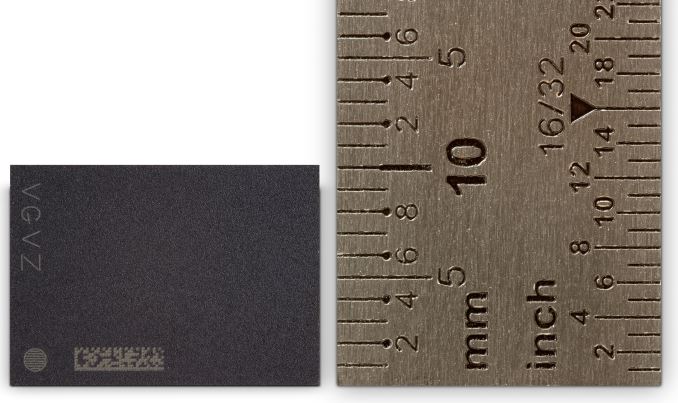


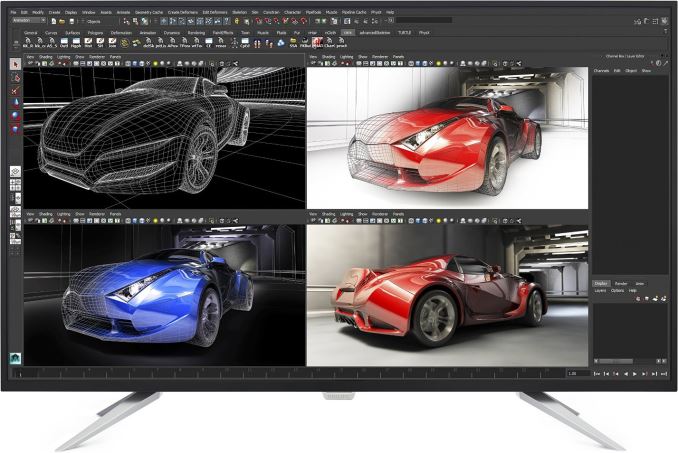
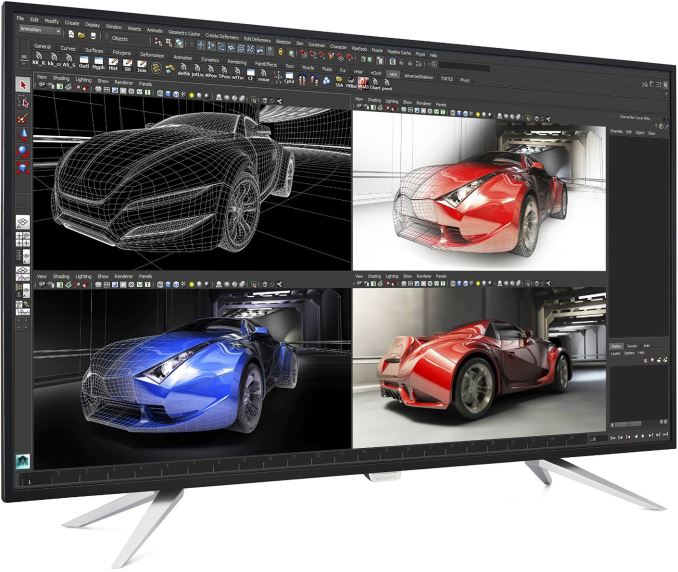

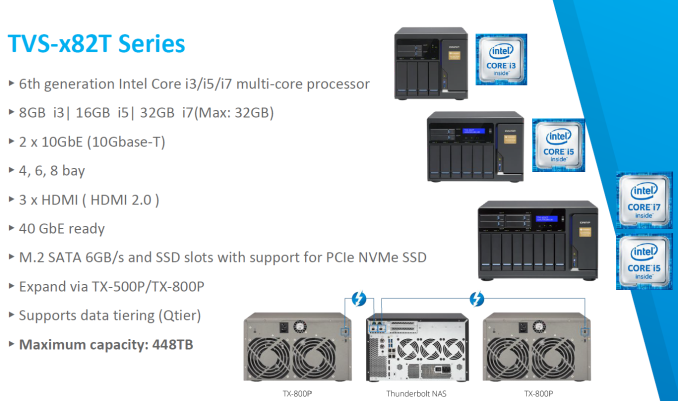
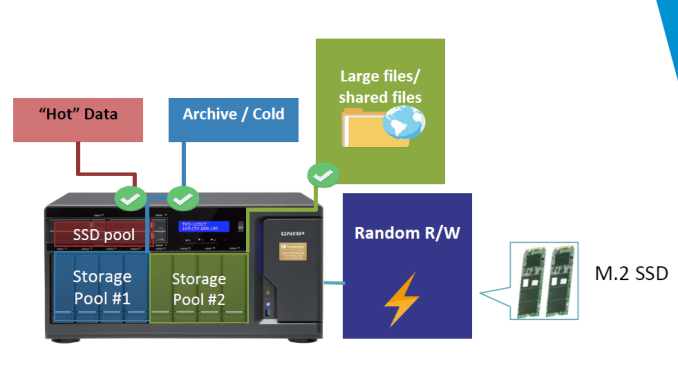
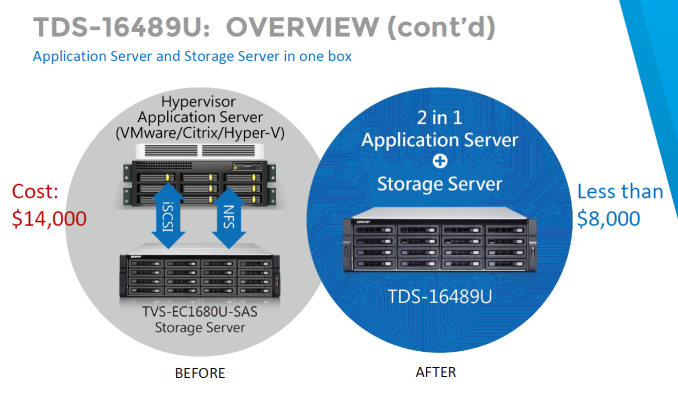
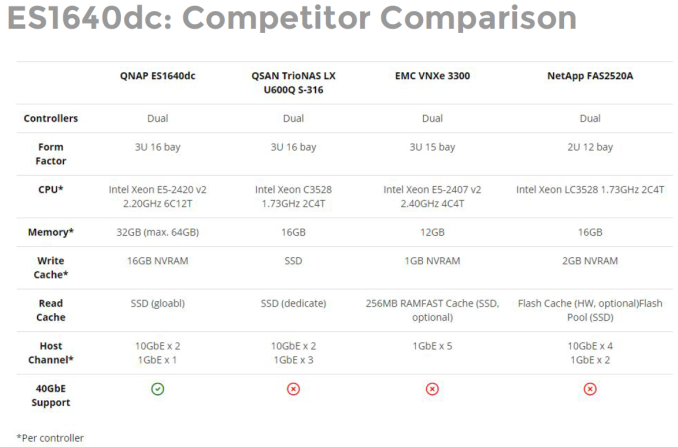
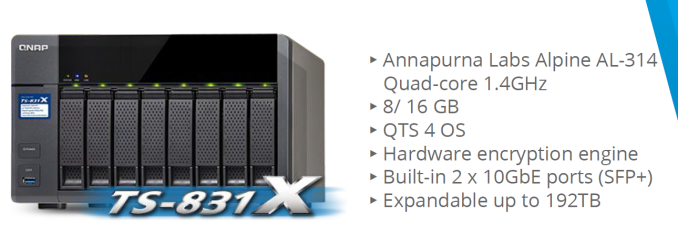
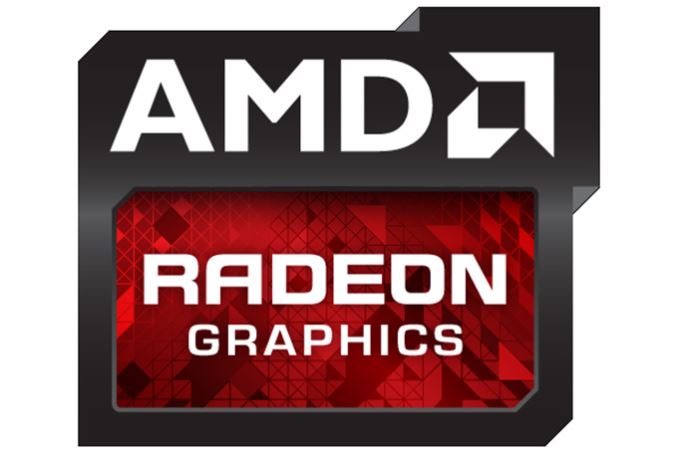
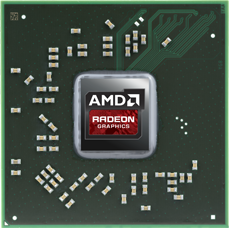
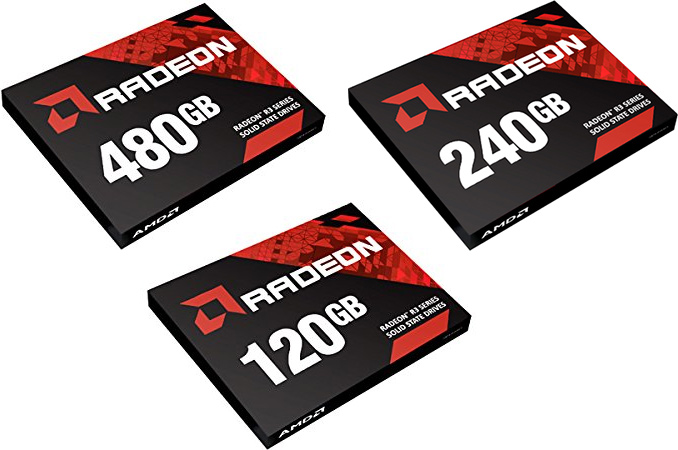

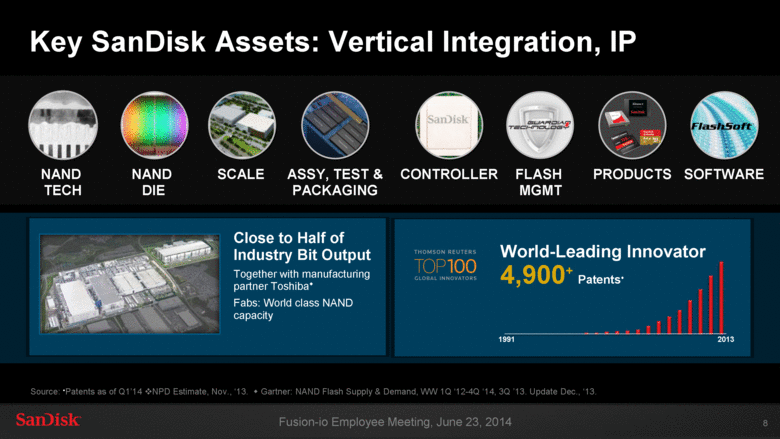
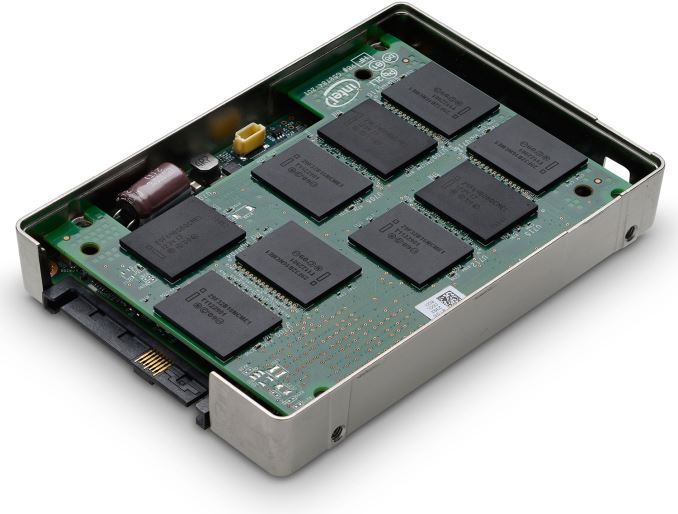
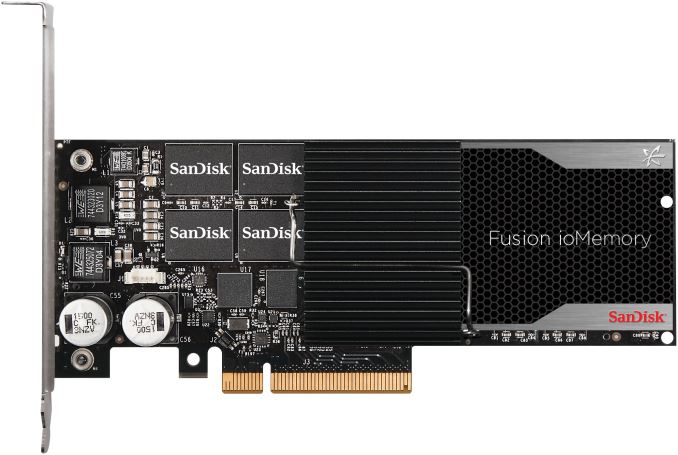
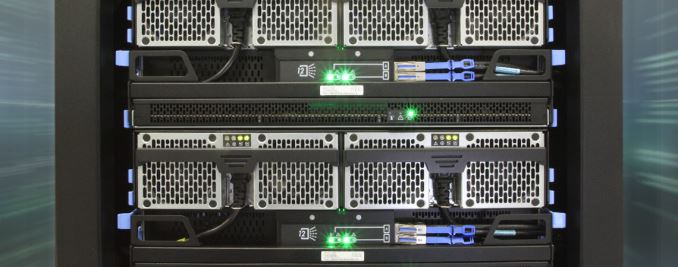
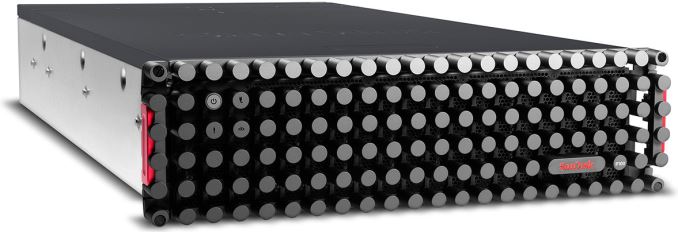

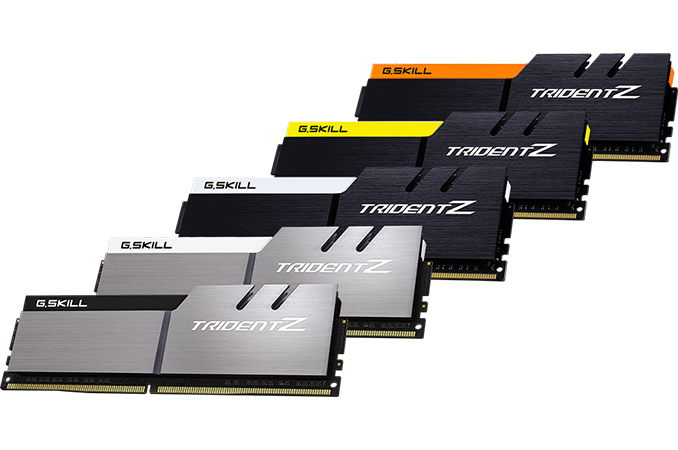


























Bookmarks